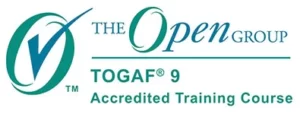TOGAF®9 Certified (level 1&2) Training Course
Learn from the Best, Learn from TopD
Features of This Course
Why Choose TOGAF® 9 (level 1 & 2) Certification Training?

TOGAF® 9 (level 1 & 2) Certification Training provides a detailed guide on how to establish yourself as an expert in this field as well as provide effective procedures for managing your IT project, allowing you to make timely decisions that support your organization’s efforts in developing technology that aligns smoothly with all business standards and guidelines established internally, while still remaining agile and flexible enough to work across various industries.
Broker Statement
- TOGAF®️ 9 Certified delivered by Good e-Learning is a course accredited by The Open Group.
- TopD Learning promotes this course for Good e-Learning.
Start Learning & Growing Your Skills Today!
Join 5,000+ successful students in a journey called growth. Let’s Talk 🙂
Instructor LED Live Session
Self Paced Learning
One to One Training
Course Curriculum
- The TOGAF standard, Version 9.2 Foundation Workbook
- Why TOGAF Certification for People?
- The TOGAF Certification Program
- Enterprise Architecture Background
- Interview with Allen Brown – CEO of the Open Group
- Architecture in the TOGAF Context?
- TOGAF Background
- Architecture Types
- TOGAF 9.2 Components
- What is the Value of TOGAF as an Architecture Framework
- What is an Architecture Framework?
- TOGAF Components
- Describe the main objectives of each phase
- Briefly explain the approach undertaken for each phase
- Briefly explain how Requirements Management fits into the ADM cycle
- Describe the nature of the Requirements Management process
- To briefly explain the contents of Part III of TOGAF 9.2
- The need for Architecture Principles and where they are used within TOGAF 9.2
- The standard template for Architecture Principles and what makes a good Architecture Principle
- What a Business Scenario is, its purpose, and explain where Business Scenarios are used within the ADM cycle
- The purpose of Gap Analysis and describe the Gap Analysis technique
- Explain the term interoperability, and understand the use of Interoperability Requirements within the TOGAF ADM
- To understand the Business Transformation Readiness program and where Business Transformation Readiness is used within the ADM
- To understand the characteristics of Risk Management and where Risk Management is used within the TOGAF ADM and to understand Capability-Based Planning
- To define and explain the concepts of Stakeholders, Concerns, Architecture Views, and Architecture Viewpoints
- To describe a simple example of an architecture viewpoint and view
- To discuss the relationship between stakeholders, concerns, architecture views, and architecture viewpoints
- To describe the architecture view creation process
- To define what a building block is and explain what makes a good building block
- To explain the distinction between Architecture Building Blocks and Solution Building Blocks
- To explain the use of building blocks in the ADM cycle
- To describe the characteristics of an Architecture Pattern
- To explain the role of architecture deliverables across the ADM cycle
- To briefly explain the purpose of key TOGAF deliverables such as Architecture Building Blocks, Architecture Contract, Architecture Principles, Architecture Vision, Compliance Assessment, or Statement of Architecture Work
- To explain what the Enterprise Continuum is
- Describe how it is used in organizing and developing an architecture
- To explain how the Enterprise Continuum promotes re-use of architecture artifacts
- Describe the constituents of the Enterprise Continuum
- To explain the purpose of the Enterprise Continuum
- To explain the purpose of the Architecture Continuum
- To list the stages of architecture evolution defined in the Architecture Continuum
- To explain the purpose of the Solutions Continuum
- To list the stages of architecture evolution defined in the Solutions Continuum
- To explain the relationship between the Enterprise Continuum and the TOGAF ADM
- To describe the Architecture Repository, and explain the relationship between the Enterprise Continuum and the Architecture Repository
- To describe the classes of information held in the Architecture Repository
- To list the three levels of the Architecture Landscape
- To explain the purpose of the Standards Information Base within the Architecture Repository
- To explain the role of the TRM as a Foundation Architecture
- To describe at a high level the main components of the TOGAF TRM
- To explain the basic concepts of the III-RM
- To explain the relationship of the III-RM to the concept of Boundaryless Information Flow
- To explain the concept of Architecture Governance and explain why it is beneficial
- To describe the main components that make up an Architecture Governance framework
- To explain the need for establishment of an Architecture Board and list its responsibilities
- To explain the role of Architecture Contracts
- To explain the meaning of and need for Architecture Compliance
- To explain the purpose of Architecture Compliance Reviews and briefly describe the Architecture Compliance Review process
- To explain how the ADM can be used to establish an Architecture Capability
- Understand the inputs to the phase and be able to explain the following key elements: Architecture Frameworks, Business principles, business goals, and business drivers
- Explain the influence of pre-existing architectural inputs on the phase
- Understand the steps and be able to: Describe how to establish an enterprise architecture team and organization, identify and establish a set of Architecture Principles for a given scenario, discuss the appropriate considerations for tailoring the framework
- Understand the outputs and be able to explain the following key elements: Architecture Principles, Architecture Governance Framework, Request for Architecture Work
- Explain how Security Architecture influences this phase
- Explain how Architecture Governance fits within the ADM cycle
- Discuss the key success factors for putting Architecture Governance into practice
- Discuss the factors that should be considered when setting up an Architecture Board
- Explain how to operate an Architecture Board
- Describe the properties of a good Business Scenario
- Explain how to develop and validate a Business
- Describe the typical contents of the Architecture Repository at this point
- Understand the steps and be able to describe how to identify stakeholders, their concerns, and business requirements. As well as being able to explain the purpose of a Business Transformation Readiness Assessment and describe the risk assessment approach taken in this phase
- Understand the outputs and be able to explain the following key elements, including their purpose: Statement of Architecture Work, Capability Assessment, Architecture Vision, and Communications Plan
- Explain the Security Architecture influences on this phase
- Explain the purpose of the Architecture Content Framework
- Describe the main components of the Content Metamodel
- Describe the relationship between the Architecture Content Framework and the TOGAF ADM
- Describe the steps in developing a Stakeholder Map
- Describe the stakeholders and their concerns
- Use the example Stakeholder Map provided by the TOGAF Standard as a guideline to identify stakeholders
- Describe the core metamodel concepts
- Explain the purpose of dividing the metamodel into core and extensions
- Describe the key concepts related to the core metamodel entities
- Explain how to reconcile Interoperability Requirements with potential solutions
- Explain the factors that influence Business Transformation Readiness
- Explain how to determine requirements for risk assessments
- Explain how Capability-Based Planning is applied in an enterprise architecture context
- Understand the inputs to the phase and explain business principles, business goals, and business drivers
- Understand the steps and be able to: Describe three techniques for business modeling, explain the considerations for selecting reference models, viewpoints, and tools, explain the technique of Gap Analysis
- Explain how building blocks are used in the development of the Business Architecture
- Understand the outputs and be able to explain the following key elements: Business Architecture components of the Architecture Definition Document, Business Architecture components of the Architecture Requirements Specification
- Explain the Security Architecture influences on this phase
- Explain the considerations for the implementation order of the Data and Application Architectures
- Understand the inputs to the phase and explain data principles
- Understand the steps and be able to explain the considerations for selecting reference models, viewpoints, and tools
- Understand the outputs and be able to explain the following key elements: Data Architecture components of the Architecture Definition Document, Data Architecture components of the Architecture Requirements Specification
- Explain the Security Architecture influences on this phase
- Understand the inputs to the phase and explain application principles
- Understand the steps and be able to explain the considerations for selecting reference models, viewpoints, and tools
- Understand the outputs and be able to explain the following key elements: Application Architecture components of the Architecture Definition Document, Application Architecture components of the Architecture Requirements Specification
- Explain the Security Architecture influences on this phase
- Explain the TRM graphic, including the following key elements: Application Software, Categories, Application Platform Interface, Application Platform, Communications Infrastructure Interface, Qualities
- Briefly describe the structure of the TRM
- Briefly explain the main architecture objectives of using the TRM
- Explain what the Platform Services Taxonomy is
- Explain what the Service Quality Taxonomy is
- Explain how to customize the TRM to meet an organization’s specific needs
- Describe the business and technical drivers for Boundaryless Information Flow
- Explain how the III-RM fulfills the solution space for Boundaryless Information Flow
- Briefly describe the high-level structure of the III-RM
- Explain the III-RM graphic, including the following components: Business Applications, Infrastructure Applications, Application Platform, Interfaces, Qualities
- Understand the inputs to the phase and explain the following key elements: Technology Principles
- Understand the steps and be able to: Explain how the TRM can be used when developing a Technology Architecture, Explain the role of ABBs
- Understand the outputs and be able to explain the following key elements: Technology Architecture components of the Architecture Definition Document, Technology Architecture components of the Architecture Requirements Specification
- Explain the Security Architecture influences on this phase
- Describe how the Implementation Factor Assessment and Deduction Matrix can be used to document factors impacting the Architecture Implementation and Migration Plan
- Explain the purpose of the Consolidated Gaps, Solutions, and Dependencies Matrix
- Describe the purpose of an Architecture Definition Increments Table
- Explain how the Transition Architecture State Evolution Table can be used in conjunction with a defined taxonomy such as the TOGAF standard’s TRM
- Explain how the Business Value Assessment Technique can be used in architecture development
- Explain how migration planning techniques are used in this phase to review and consolidate the Gap Analysis results from earlier phases
- Describe the steps to create the Implementation and Migration Strategy
- Describe three basic approaches to implementation
- Explain how to identify and group work packages
- Explain how Transition Architectures are created and documented
- Describe the management frameworks that have to be coordinated within this phase
- Explain how business value is assigned to each work package
- Describe the steps to prioritize the migration projects
- Describe the steps to confirm the Architecture Roadmap
- Explain key outputs of this phase specifically: Implementation and Migration Plan, Architecture Definition Document, including Transition Architectures (if any)
- Explain the Security Architecture influences on this phase
- Understand the inputs to the phase
- Understand the steps and be able to describe the following: Explain how to tailor and conduct an Architecture Compliance Review
- Understand the outputs and be able to explain the following key elements: The contents of Architecture Contracts, their relationship to Architecture Governance
- Explain the Security Architecture influences on this phase
- Demonstrate the role that risk monitoring plays in this phase
- Understand the inputs to the phase and be able to explain the following: Change Requests
- Understand the steps and be able to describe the following: Architecture board meetings
- Understand the outputs and be able to explain when the following might occur: Updated Architecture Contracts, a new Request for Architecture Work
- Explain the Security Architecture influences on this phase
- Understand the inputs to the phase
- Understand the steps and their correspondence to phases
- Explain how the Requirements Management steps correspond to ADM phases
- Explain the purpose of the outputs of Requirements Management
- Explain the Security Architecture influences on the requirements captured
- Describe the purpose of Architecture Partitioning
- Describe the classification criteria for solutions and architectures when considering partitioning
- Describe how Architecture Partitioning can be employed in the Preliminary Phase of the ADM
- Explain the relationship between the Architecture Repository and the Enterprise Repository
- Describe the purpose of the repository areas that hold output of projects, specifically: Architecture Landscape, Reference Library, Standards Information Base
- Governance Log
- Describe the concept of iteration and how it applies to TOGAF standards
- Describe the factors influencing the use of iteration
- Describe some suggested iteration cycles
- Describe how the ADM supports different types of engagements within the organization
- Explain how to apply iteration cycles to the ADM phases
- Explain how the concepts of levels and the Enterprise Continuum are used to organize the Architecture Landscape
- Identify the different levels of architecture that exist in an organization
- Describe the responsibility that Enterprise Architects have towards Security Architecture
- Describe the recommended Security adaptations to the ADM
- Explain the role of a Capability Maturity Model
- Explain the CMMI process improvement approach development by CMU
- Describe the structure and levels of the ACMM developed by CMU for the US DoC
- Explain the role of Maturity Assessments in the ADM
- Explain the purpose of the Architecture Skills Framework and why it is needed
- Describe the benefits of using the Architecture Skills Framework
- Describe the structure of the Architecture Skills Framework, including roles, skills, and proficiency levels
Frequently Asked Questions
FAQs
You will never miss a lecture at TopD Learning! We’ve got you covered:
- View the recorded session of the class available in your LMS.
- You can attend the missed session, in any other live batch.
Broker Statement
- TOGAF®️ 9 Certified delivered by Good e-Learning is a course accredited by The Open Group.
- TopD Learning promotes this course for Good e-Learning.
- The Open Group Certification for People: TOGAF®️, ArchiMate®️, and IT4IT™️ are registered trademarks of The Open Group
TOGAF Certification allows you to:
Explore New Opportunities
Large business houses trust certifications because of standardisation. Having a certificate lets you show industries that an industry-recognised board has trained and tested you. Because of this trust, a TOGAF certification opens new avenues that may not have been otherwise possible. Huge enterprises, including hospitals and banks, will have faith in your skills and depend on you for solutions to their enterprise management problems.
Speak a language common to all professionals in your field
Being a TOGAF professional requires interacting with other professionals when planning and implementing your organisation’s environment. You can only do this when you can speak in a language understood by other professionals in your field. You can do this successfully after you have completed your certification course. Instead of trying to achieve your TOGAF Certification prep course in Singapore, depend on us. We at TopD Learning will provide you with the training required to become a top TOGAF pro.
Pursue our course from anywhere
You do not have to be physically present at our institute to complete the certification course, as TopD Learning also offers TOGAF Certification training online. You only need a desktop or laptop connected to the internet to complete our course. Our faculty consists of hard-core TOGAF professionals from India who impart the best TOGAF Certification Training. With their help, you can be sure of completing the curse successfully. Fill up our online form and submit it or contact us for our TOGAF® 9 Exam and Certifications details.
Why Complete TOGAF Certification Course
Applying for TOGAF Training and Certification Course is an indication that you are serious about your enterprise architect career. It confirms that you comprehend the enterprise architecture body of knowledge. As a certified TOGAF professional, you can quickly solve complex technical processes. Suppose you are a certified technical lead or developer. In that case, you can rely on TOGAF to master the principals of enterprise architecture, ensuring that your career path to positions like architect and senior architect. Enterprise architects develop an organisation’s long-term information technology strategy that supports the complete business plan.
Your liabilities
Upon completing the course, you will create the applications and technology roadmap to steer and direct the organisation based on standards for the technological infrastructure of TOGAF. Your responsibility includes ensuring that IT & IT-enabled processes run without any hitch from start to finish. Additionally, you have to define all aspects of the technological flow. You will have to manage various projects and meetings that may include:
- Technology Lifecycles: It determines the implementation of versioning and changes for the different types of technologies the organisation you work for uses.
- Architecture Strategy: You have to handle all the aspects of information technology, which includes determining the existing state, transition, and the preferred path of the strategy.
- Governance Committees: It decides on the requirements of the stakeholders’ protocols, policies, and security standards.
- Architecture Review Boards: You need to host periodic meetings for stakeholders to discuss and approve changes to the existing architecture.
- Managing Portfolios: You have to take care of portfolio management, too, as it relates to the status and health of the IT infrastructure.
Work for Leading Companies by Becoming a TOGAF Professional
Modern generation enterprises depend on The Open Group Architecture Framework (TOGAF), a development method, to plan and design their information technology architecture. As such, there is an ever-growing demand for TOGAF professionals. Upon completing the course, such professionals keep in touch with various heads of departments and help them to quickly and effectively design and implement an information technology strategy. TOGAF takes a high-level approach to the framework used by enterprises to manage, design, plan, and execute to manage their Enterprise Architecture. Enterprise Architecture consists of four divergent domains (business, application, technology, and data) and depends heavily on existing standardised technologies and products. TopD Learning is one of the leading Indian institutions that provide a comprehensive TOGAF Certification Training course.
Work for the most prominent international organisations
In simple terms, TOGAF-certified professionals must ensure alignment between the goals and ideals of an organisation and aspects of information technology. Thanks to this, some of the largest organisations in the world often seek these professionals. In addition, TOGAF training also benefits those interested in working on IoT projects. Although you can go for a TOGAF Training and Certification Course in Australia, you can get the same quality training in India from TopD Learning.
Improve Your IT Architectural Skills with TOGAF and Get a Dream Job
Getting a TOGAF (The Open Group Architecture Framework) certification adds a new feather in your hat, as employers are constantly searching for information technology staff who have architectural skills. Companies use this framework to plan, develop, and design the infrastructure of their enterprise based on their needs. They need a TOGAF-certified professional or a trained architect to design, implement, and incorporate all their information technology development strategies. In addition, business owners prefer hiring individuals having this certification, as they know that individuals who have gained this certificate are an excellent asset to their company. Such professionals can communicate with various heads of departments and can help design and implement IT strategies effectively and quickly.
Depend on the leaders when taking this course
To complete the TOGAF certification course, you need the help of professional institutions like TopD, which offer the best TOGAF certification training in Delhi. Their faculty boasts of professionals who know TOGAF like the back of their hand and can help you complete the course and get a certification with relative ease. They guide you through this challenging course that requires you to be careful in your approach and execution to clear it successfully. Our study materials, along with the assistance of our teachers, ensure that you do not face any problems while completing the course.
Employers are looking for employees with TOGAF certification
You get access to lots of job opportunities once you get the certification, as it is always at the top of the most in-demand skills. Some employees demand this certification as mandatory. As TOGAF is the most popular architecture development certification, the number of individuals taking this course continuously increases. You need not worry if you do not stay in Delhi, as you can avail of our TOGAF certification training online in Delhi. It allows you to take the course at the time of your choice from the comfort of your home. The experienced and dedicated faculty of TopD play a vital role in ensuring that candidates taking the online course do not face any difficulties. If the candidate faces any problems with our curriculum, they can state their problems, and their teacher will help them solve the issue.
The most sought-after institution
Study at your own pace
The primary advantage of pursuing the TOGAF course of TopD Learning is you can study at your own pace. If you face any difficulties, you can log in to our website and go through the specific course you could not understand. You can do this as often as you want until you have fully mastered that module. Thanks to the massive demand for our course in the financial capital of India, we now offer our TOGAF training and certification course in Mumbai too. It allows Mumbaikars to complete their certification course from one of the most reputed Indian institutions. According to one of our students who has joined a leading firm with the help of our certification, “attending TopD Learning course is a faster and more effective way to learn the TOGAF course than self-study alone.”
Achieving milestones regularly
One can gauge the popularity of our course from the fact that more and more people are opting for it. We realize that people living in the suburbs of Mumbai cannot visit our brick-and-mortar education center. To help them overcome the obstacles of visiting our institution, we have launched an online version of our TOGAF certification training course in Mumbai. The average annual remuneration for a solutions architect is Rs.246,8,245, whereas a senior solutions architect can command approximately Rs.28,45,900. Start living a lavish lifestyle and enjoy the benefits of holding a TOGAF certification by completing the course at TopD Learning. Visit our Delhi office or give us a call today.


